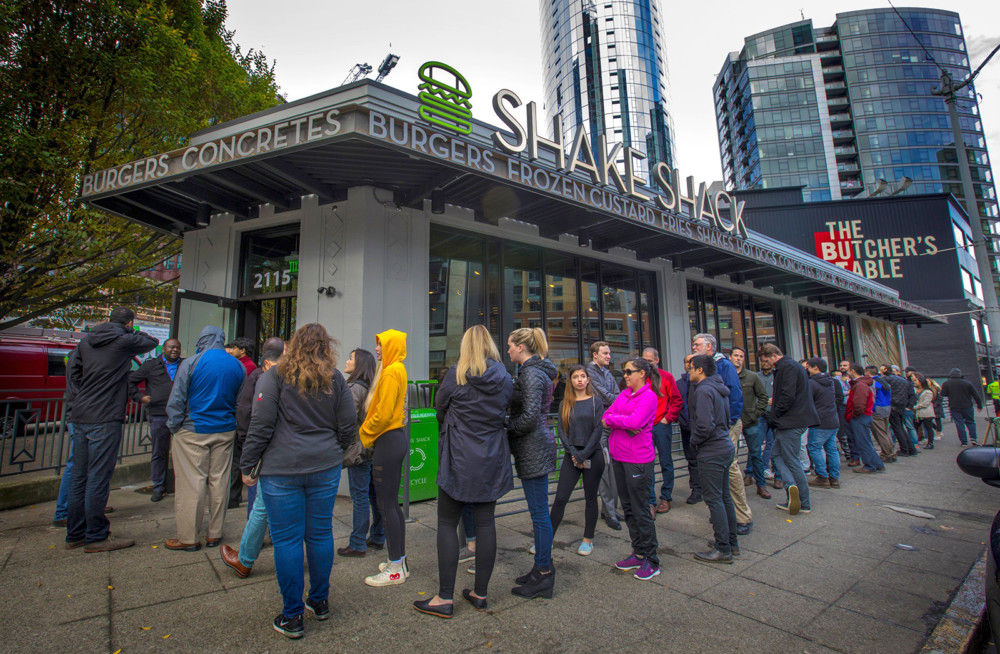By Gene Balk
The Seattle Times
WWR Article Summary (tl;dr) As Gene Balk reports, “The reporting was based on new data from the Bureau of Labor Statistics (BLS) showing that in King County, the 2019 third-quarter average wage for employees in the information sector hit $5,367 per week.”
SEATTLE
Everybody knows that tech workers in Seattle do very, very well. But are all those 20-somethings you see standing in the lunch line at the Shake Shack in South Lake Union really pulling in $279,000 a year?
A widely disseminated Bloomberg News article published last week pegged the average Seattle tech wage at $279,000 a year, which, the article pointed out, is 56% more than New York City finance workers make.
Needless to say, this raised a lot of eyebrows here in Seattle.
The reporting was based on new data from the Bureau of Labor Statistics (BLS) showing that in King County, the 2019 third-quarter average wage for employees in the information sector hit $5,367 per week. If you project that wage out over 52 weeks, it does indeed come to $279,000.
But let’s take a closer look at what that number really means.
First off, it’s important to understand the definition of wages used by the BLS. It isn’t merely an employee’s contract pay. It also includes one-time payouts like bonuses, stock options, severance pay, profit distributions and so on. Because of that, the BLS wage numbers can vary greatly from quarter to quarter.
Each year, for the information industry in King County, the third-quarter wages are significantly higher than the other quarters. That could be because bonuses are budgeted for the third quarter by these companies, according to a BLS spokesperson.
So, in the end, it probably wasn’t the best idea to use a third-quarter figure to project an annual average wage, as it resulted in a somewhat inflated number.
The year-end number, which averages out all four quarters, would be a better choice. The most recent year-end number (for 2018) is $4,233 per week. That projects out to about $220,000 per year, a drop of $59,000 from the Bloomberg calculation. Even so, it’s still an eye-popping number.
But there’s another issue here, and I’m sure this is one that a lot of readers noticed right off the bat: Averages.
The BLS produces wage averages for U.S. counties, but averages aren’t necessarily the best measure of what the typical employee makes. That’s because an average can easily skew upward if there are some folks with astronomically high compensation, and, of course, here in King County, there are. (The median would have been better than the average, but unfortunately for this particular data, no median is produced).
One final point: The wage figure cited in the Bloomberg article is not a very precise reflection of tech-worker wages because it’s based on data for the entire information industry, which covers a wide range of occupations.
So, for example, the data would capture the wages of all those software developers at Amazon, but it would also include the wages of top-level executives, lawyers, accountants, human-resources professionals, administrative support staff and so on. And that’s not really what we mean when we talk about tech workers.
It’s also worth noting that the information industry is a very broad category.
It does include tech companies, but it also includes telecommunications, publishing, broadcasting, and motion picture and sound recording industries.
So if we want to get a more precise idea of what the typical tech workers in our area makes, where should we look?
We’d want to use data for specific tech occupations rather than an entire industry. We’d also want to find a median wage figure instead of an average. (The median is simply the midway point, half make more, half make less. It can’t be skewed by outliers.)
The Washington Employment and Securities Department produces hourly median wage data for the state’s metro areas for certain occupations. I looked up the most common tech occupation in the Seattle metro area, which is software developer (applications).
The median hourly wage for 2019 is $64.37 per hour. That translates to an annual full-time median of just over $130,000.
It may not be $279,000, but the folks in the Shake Shack line are doing alright.
___
Distributed by Tribune Content Agency, LLC.














































































































































































































































































































































































